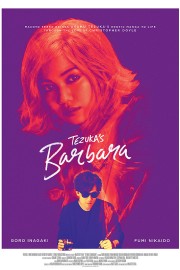Tezuka’s Barbara (Fantasia Fest)
**Seen for the 2020 Fantasia International Film Festival.
This is a really cool piece of pulp. While film noir is mostly associated with crime films, it’s more just a style, and usually involves down-on-their-luck individuals struggling through the world. The genre more got its name from the visual style filmmakers gave it during the ’40s and ’50s, and while color might seem like a hindrance to the genre, the right filmmakers can make the genre feel just as it was in those earlier years. We would put Christopher Doyle, the cinematographer of “Hero,” “2046” and “In the Mood for Love” on that list of one of the “right filmmakers,” no?
I bring up film noir and pulp because Macoto Tezuka’s “Tezuka’s Barbara,” adapted from the manga by his father, Osamu Tezuka (best known for Astro Boy and “Kimba the White Lion”), very much felt like a noir story, as it follows an author (Gorô Inagaki) and his fixation on a mysterious woman (Fumi Nikaidô). The cinematography by Doyle and Kubbie Tsoi doesn’t do anything specific in terms of lighting, but when it comes to framing and composition, boy does this film remind me of a movie like Nicholas Ray’s “In a Lonely Place.” The question is whether this fixation is a bad thing for Yosuke Mikura, the author in the film. By the end, it still feels unsure as to what the answer is.
Mikura is an author who works on dime-store pulp novels that are easy to digest for readers, but, as he’s reminded by others, easily forgotten afterwards. His narration at the beginning sets the stage, and it definitely sounds like the type of descriptive prose we got out of the noir of a different age, talking about the city as a place of filth, and the people who inhabit it similarly. One day, when he’s walking the streets, Mikura meets Barbara (Nikaidô), and he is transfixed immediately. He seems to have a significant other, and one who supports him and tries to introduce him to her family and her world, but his obsession with Barbara is strong, so much so that a torrid affair begins, and they talk marriage. That just adds a whole level of complication to the matter, though, especially when they go to discuss it with Barbara’s mother.
If you find yourself a bit lost narratively watching “Barbara,” I certainly do not blame you, but I will also say to stick with the film, because it is a fascinating study in creative inspiration and romantic obsession being rolled into one. Barbara is a great femme fatale, and I would imagine people will think about how odd and sexual performance by Nikaidô is for long after the film ends. And Inagaki is a great noir “hero.” He has the look of Bogart’s character in “In a Lonely Place,” just sans the fedora. After a while, these characters just suck you in to the world Tezuka has built for them, and we follow them all the way to an ending that is in line with the genre the filmmaker, and his late father, seem to be working within, but also adds a further degree of surreal uncertainty to the story. It’s easy to get lost in “Tezuka’s Barbara”; after all, the character- and the movie- both work within the confines of one of cinema’s richest genres, while also adding their own twists to the formula.










